
Data Backup & Disaster Recovery
If your server or computer failed or was stolen would you have lost all of your data?
If you purchased a replacement machine how long would it take you to get up and running?
If your business suffered a fire, flood or some natural disaster would you be able to recover?

“If you fail to plan then you plan to fail!”
Complete data loss is not something you ever need to experience. One of the biggest mistakes that people make, other than never backing up their data, is to rely on a single backup. We can guide you through a backup strategy that is tailored to your needs and your budget.
Stating the Obvious
This statement, though hopefully obvious, must be said because we are always running into environments where a backup does not exist: “Any backup is better than no backup at all”. So if you currently are not backing up your data then we implore and encourage you to start. Your first step can be as simple as a phone call to us so that we can guide you to a tailored solution that fits your needs and your budget. Data loss is totally preventable and no one ever needs to suffer it.
The Challenge
For those of us with experience backing up data, at some point, we’ve come face to face with Murphy’s law which states, “Anything that can go wrong will go wrong”. Issues such as the backup having data corruption or equipment failure can arise during the point of data restoration (retrieval). We quickly learn that relying on only one backup is unsound. Having learned this tough lesson, we begin to employ two or more devices in our backup procedure.
Multiple backups become a saving grace up to the point where disaster strikes. A building fire or theft can easily compromise our ability to recover data. It is now evident that maintaining backups in only one location is risky. Rotating backups off-site becomes part of the new procedure. Then suddenly mother nature steps in with a flood or an earthquake which can affect an entire region. If the computer(s) along with the on-site and off-site backup exist within the affected region then you may be unable to recover data.
Fortunately, cloud storage providers, who have data centers in different parts of the country for redundancy, exist and offer backup plans at affordable prices. However, because internet speeds dramatically affect cloud backup, it takes too long to perform a complete recovery. So what is the ideal backup strategy?
The Strategy
The ideal backup strategy consists of three parts so that we don’t place our eggs all in one basket. For the sake of rapid recovery, the first part is a local backup which is accomplished through software and some form of data storage. Software is used for automation and the ability to perform an incremental backup, which backs up only the changes that occurred since the previous backup. Automation is extremely important because as humans, we are simply not consistent enough to ensure that the backup job gets accomplished (we get busy, tired, or forgetful). Since the data needs to get backed up to some sort of storage, this gets accomplished through either direct attached storage, like an external hard drive or network access storage on the local area network.
The second part of the strategy is an off-site backup. The easiest way to accomplish this is by incorporating a scheduled rotation of a secondary storage device or storage media. Because of the fragility of conventional storage and media, extra care needs to be taken to ensure that damage does not occur during transport. A more sophisticated off-site backup can be accomplished via software over the internet through a secure VPN connection to a secondary storage device. However, performing complete data recovery from an off-site backup will require the transport of the storage device or media back to the office.
The last part of the strategy is to use a cloud backup service that has redundant data centers or where at least their data center is not located in the same region. Cloud backup is best used as the last resort when local and off-site backups have been compromised like in the case of a major disaster.
Although this three-part backup strategy is ideal, not everyone can abide by it. In some cases, a two-part strategy is all that can be accomplished. Even if only one part of this strategy is used the fact still remains that “any backup is better than no backup at all”.
Software Solutions Local Backup for Direct Attached Storage
Windows Backup
Retrospect Solo
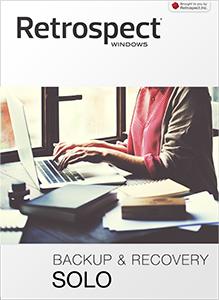
Time Machine

Retrospect Solo

Features
Built into the OS
Very basic features
Not user friendly
Features
Affordable
Easy-to-use interface
Versioning
Scheduling
Features
Built into the OS
Automatic Backup
Versioning
User Friendly
Features
Affordable
Easy-to-use interface
Versioning
Scheduling
(Local Area Network) LAN Backup
Retrospect Desktop For Windows
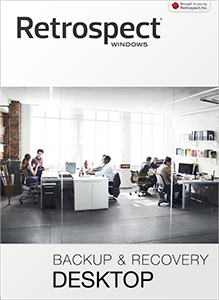
Features
Backup 5 computers over the network
Windows/macOS/Linux Client Support
Scheduling and Versioning
Storage and Cloud Support
Retrospect Desktop for Mac
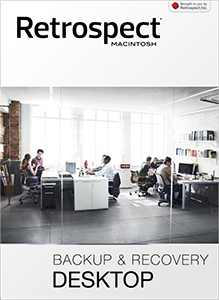
Features
Backup 5 computers over the network
Windows/macOS/Linux Client Support
Scheduling and Versioning
Storage and Cloud Support
LAN Server Backup
Single Server
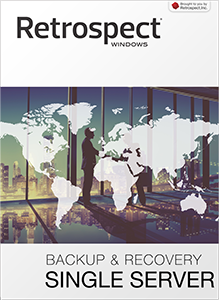
Multi-Server
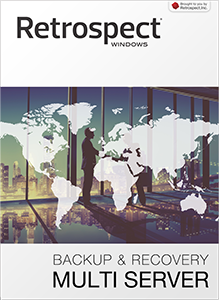
Single Server
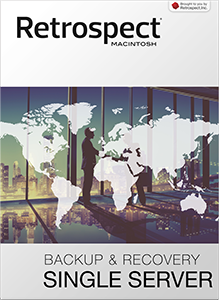
Multi-Server

Features
Single Windows server
and 5 clients
Win/Mac/Linux Client Support
Scheduling and Versioning
Storage and Cloud Support
Features
Unlimited Windows server
and clients
Win/Mac/Linux Client Support
Scheduling and Versioning
Storage and Cloud Support
Features
Single Mac server and 20 clients
Win/Mac/Linux Client Support
Scheduling and Versioning
Storage and Cloud Support
Features
Unlimited Mac servers
and clients
Win/Mac/Linux Client Support
Scheduling and Versioning
Storage and Cloud Support
Virtual Server Backup
Retrospect Virtual

Features
Modern Management Console
Rapid Restore/Recovery
Local and Cloud Storage Support
Granular Application Protection
Runs on a local host or in the Cloud
Secure transfer of data
Solarwinds Server Backup & Recovery
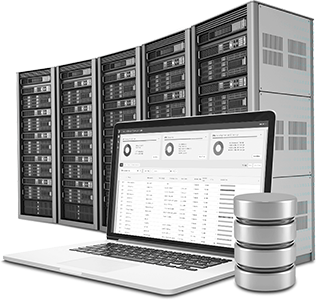
Features
No separate appliances
Use Direct Attached or NAS Storage
Pricing is simple and based on the devices
Virtualization Support (VMware & Hyper-V)
Support for Exchange, MS-SQL & SharePoint
Incremental backup locally and to the cloud
Bare-Metal recovery
Multiplatform Support
Datto Alto
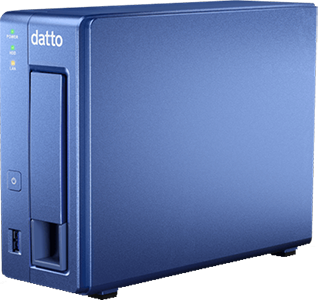
Features
Cost-effective, yet fully featured
Single small device
Simple plug-and-play implementation
Web-based management for one or many devices
Recover granular data quickly
Supports protection of:
Windows, Linux, and Mac source machines
Datto Cloud virtualization to spin up lost servers
Cloud Backup File Level Backup
Backblaze
IDrive
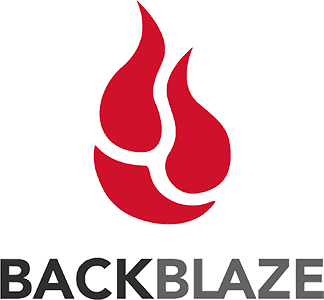

Features
Backup 5 computers over the network
Windows/macOS/Linux Client Support
Scheduling and Versioning
Storage and Cloud Support
Features
Backup 5 computers over the network
Windows/macOS/Linux Client Support
Scheduling and Versioning
Storage and Cloud Support
